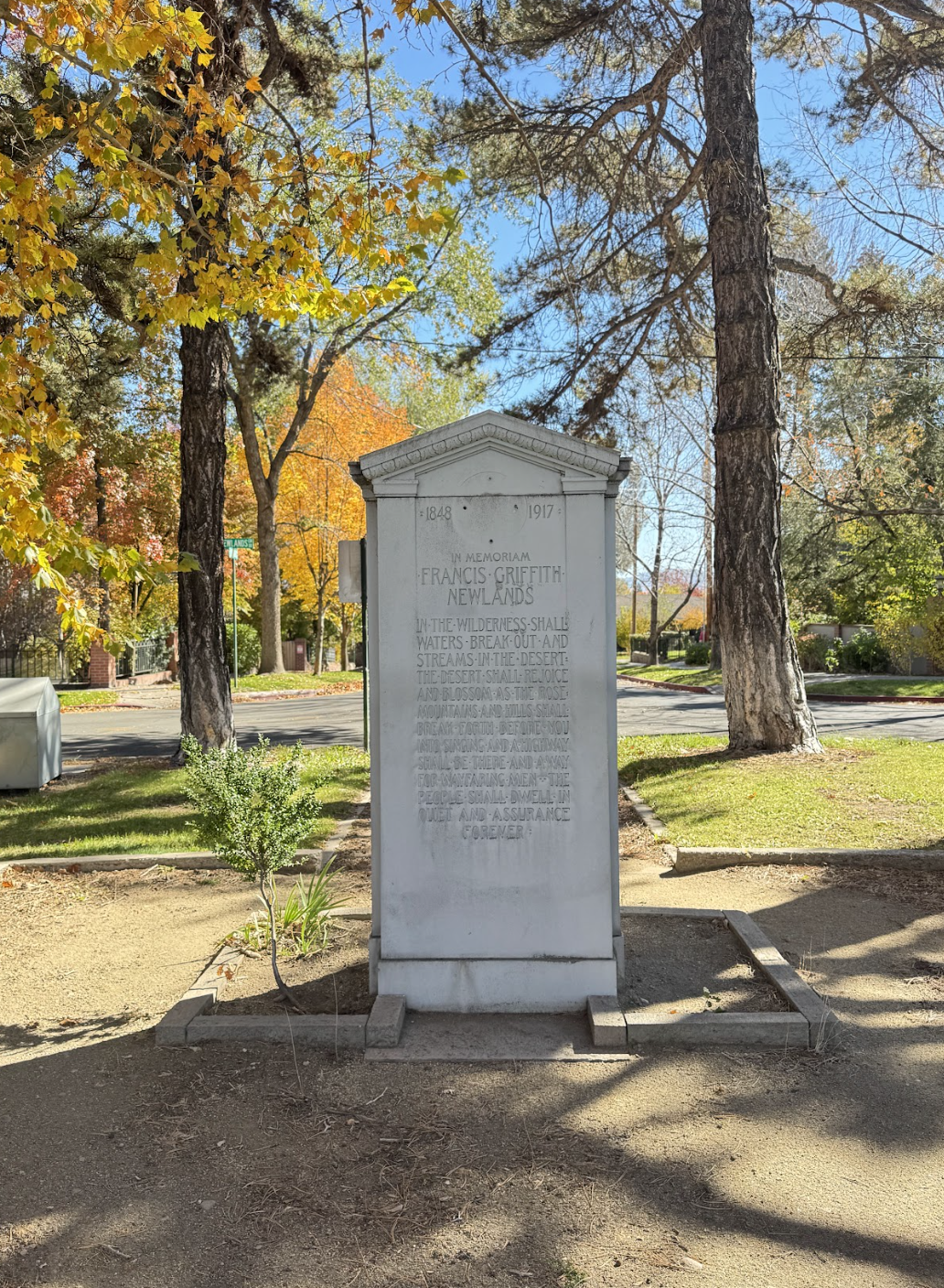What is now a neighborhood of quaint homes and quiet streets was the initial creation of Francis G. Newlands, a racist who prevented non whites from purchasing or leasing any property on areas surrounding his original home.
Newlands moved to Reno in the late 1880s and quickly had his home built at 7 Elm Court.
This house still stands today and is a private nine bedroom property, estimated at nearly $2 million in value.
Newlands was a member of the US House of Representatives from Nevada’s “at-large” district from March 4, 1893 to March 3, 1903.
During his time in political office, Newlands advocated for the repeal of the 15th Amendment to the U.S. Constitution, to strip Black men of their right to vote.
In terms of his business endeavors, Newlands started a real estate developing firm in 1903 called Newlands Corporation. Newlands and partners in the company began to develop the land around his home starting with the upper portion of the neighborhood.
Newland’s goal was to emulate the so-called City Beautiful movement which emerged in the 1890s, as a reaction to rapidly growing industrial cities.
Covenants which were established included rules about new residences and how much they would cost, as well as how many animals were allowed on the property, and who could or could not purchase property in the neighborhood.
Close to the top of the covenant there was a clause stating “That no person of African, Japanese, Chinese, or any Mongolian descent shall be allowed to purchase or lease any real property in said Newlands Terrace.”
Those who broke these rules, the covenants stated, were subject to their property rights being terminated.
Newlands passed away in 1917 leaving behind his company to continue these discriminatory practices.
In 1968, the federal Fair Housing Act was enacted prohibiting discrimination concerning the sale, rental and financing of housing based on race, religion, national origin or sex.
Despite the racist language being officially disavowed, remnants of the sordid past remain, with the Francis G. Newlands Memorial Tablet established in the 1920s still standing in Newlands park.
The monument reads, “In Memoriam Francis Griffith Newlands In The Wilderness Shall Waters Break Out And Streams In The Desert. The Desert Shall Rejoice And Blossoms As The Rose. Mountains And Hills Shall Break Forth Before You Into Singing And A Highway Shall Be There And A Way For Wayfaring Men. The People Shall Dwell In Quiet And Assurance Forever.”
There was originally a bronze relief portrait of Newlands that has since been removed, with many in the community wanting the entire tribute taken down.
Businesses and offices are now run from some of the homes that line the streets of old southwest Reno, including 548 California Avenue, which is where my mother, attorney Marilyn York, works.
Built in 1928, this beautiful tudor revival brick home was originally built for William J. Graham, a prominent figure in the history of Nevada gaming.
It has since been converted many times to accommodate various businesses. Graham and his wife lived at 548 California Avenue until their deaths in 1965 and 1968.
The house saw many figures of various Reno and American notoriety visit as Graham and his lifelong business partner James McKay owned and operated casinos, were known as bootleggers, and were principal stockholders of the Stockade red light district.
Graham and McKay promoted famous prizefights, while their Stockade brothel business thrived for a time.
The Stockade stayed in business until World War II, even after 1938 when Graham and McKay were both convicted of mail fraud.
Today, old southwest Reno remains one of the most affluent parts of town, with the median listing price for the Newlands Historic District estimated at about $1 million. Despite the white supremacist past, the Newlands name remains everywhere from the Newlands Park overlooking Reno to the memorial tablet and the Newlands Circle.







